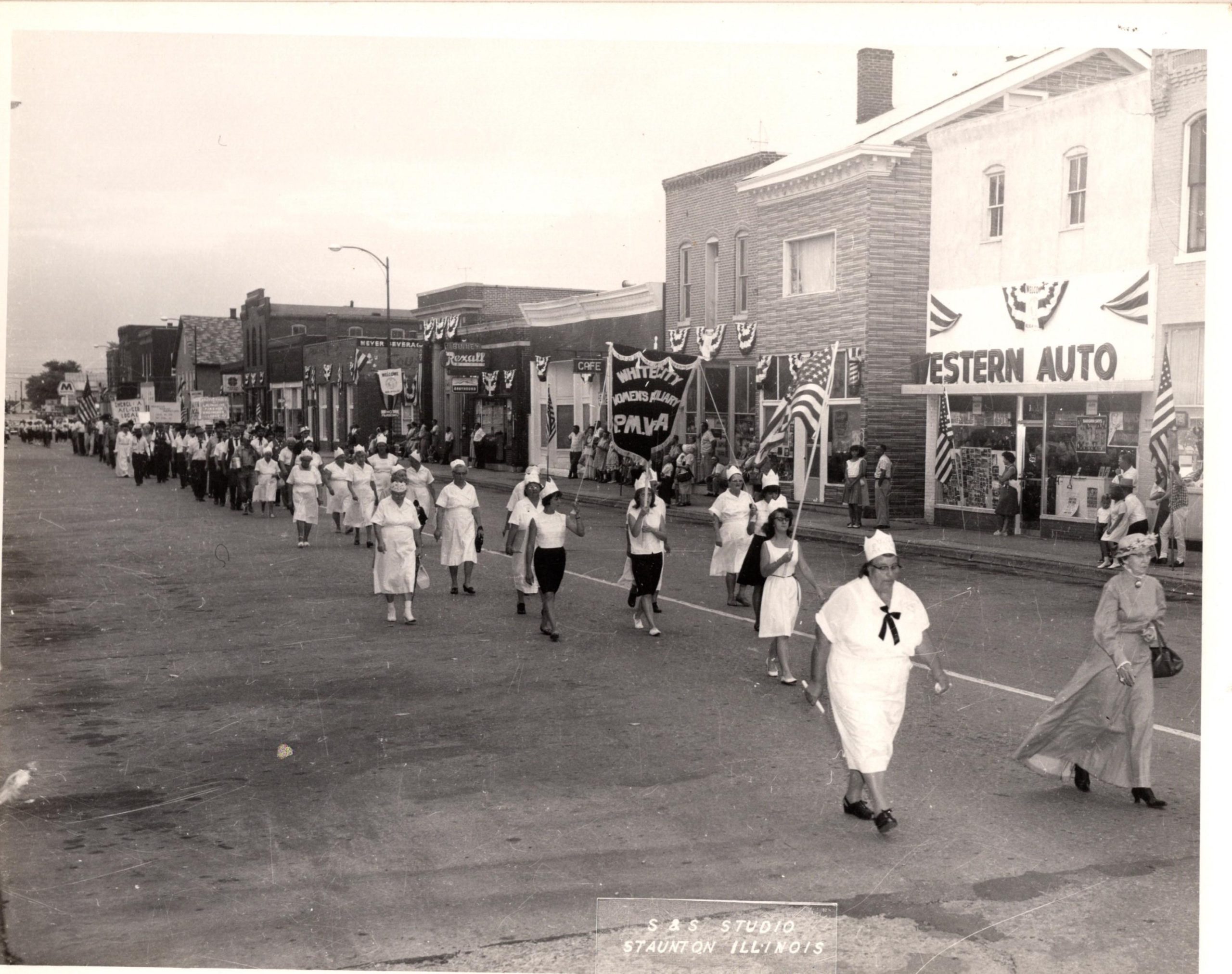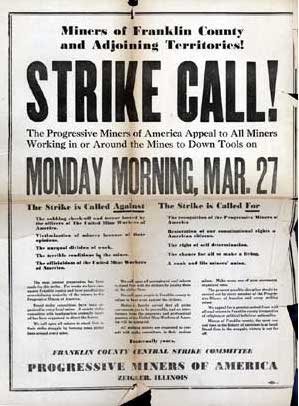The Progressive Miners of America was the breakaway union from the United Mine Workers of America. The PMA constituted itself in 1932 in Gillespie at a meeting of dissident union miners. The motivation for the split was dissatisfaction with the leadership of UMWA President John L. Lewis. An official historical marker (sponsored by the Mythic Mississippi Project, Illinois State Historical Society, and Gillespie partners) is located around the corner from the Illinois Coal Museum. It stands on the ground of the former Colonial Theater where the miners met. The name of the PMA was changed to Progressive Miner Workers of America in 1938. In the intervening few years between formation and name change, a bitter “mine war” had taken place between the PMA and UMWA factions. The PMWA was dissolved in 1999. It had not achieved success. Whereas the mine war can be seen as a negative legacy of the split, the great and inadequately acknowledged achievement of the PMA from its start was the role of the miners’ wives and other female relatives in forming the Womens Auxiliary, led by Agnes Burns Wieck. These firebrand women marched and protested in defense of the PMA members’ cause. They were immediately recognizable by their white dresses and white headbands. (php

source: minewar.org The PMA in Zeigler calls a strike in Franklin County. On internal evidence this poster must antedate 1938.

Magnificent original banner of Local No. 39, in Virden (earlier site of the Battle of Virden), of the Progressive Mine Workers of America. On internal evidence, the banner cannot be earlier than the 1938 name change. Courtesy of John Alexander.

New stained glass on display at the Illinois Coal Museum in Gillespie! It honors the Progressives.
(1/23/24 – courtesy of curator Dave Tucker)


